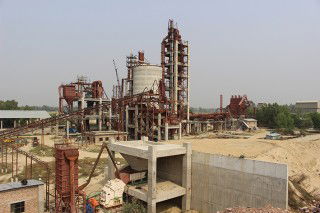Heidelberg Materials' Lixhe cement plant (formerly CBR) is submitting a request for review of its permit relating to the redevelopment of the Butte du Romont Quarry, Belgium. This concerns the modification of the relief of the ground but also the drilling of a water intake to the north of the site to water the tracks in the event of dry weather. A public inquiry will be held from 29 January 29 to 14 February 2024 at the Bassenge Urban Planning Department.
Since the opening of the quarry in 1978, the waste rock (silt, sand, gravel) has been stored to the south of the site for later reuse for the agricultural redevelopment of the exploited areas. This pile, commonly called the Butte du Romont, has an area of 27ha and a drop of more than 30m. As planned by the 2004 permit, the levelling of the mound has started. The objective was on the one hand to use this land to backfill the exploited areas of phase 1 and to gradually flatten the mound. These spaces are intended for agriculture.
However, over the years the mound was spontaneously recolonised and became a natural habitat favourable to the development of biodiversity. Six protected species have been recorded there: the natterjack toad, the midwife alyte, the plantain checkerboard, the blue-winged grasshopper, the very agile andrene and the spotted anthidia. Other species not protected but listed on the red list as in danger of disappearing have also been identified.
Now, by order of the Nature and Forests Department of the Walloon Public Service (DNF), the Lixhe cement plant must preserve the remaining part of the mound (approximately 7ha) located to the south of the Romont quarry, especially as an interesting biodiversity has developed there. It is necessary to take measures to safeguard the six protected species identified on the site.
To meet the objective of preserving nature, it is necessary to request a modification permit. Measures to consolidate the mound must be taken. The sides must be reprofiled. The junction between the foot of the mound and the redeveloped areas must be achieved harmoniously via bocage areas of one hectare each and suitable for crops and amended permanent meadows. Ecological compensation zones will be created to the north of the site to allow thermophilic crops to be sown.
In addition, given the progress of the deposit, a water intake will be installed close to the current operating front enabling the watering of tracks more easily in dry weather.

Supreme court orders relocation of cement and other industries
Nepal’s Supreme Court has ordered the relocation of industries surrounding Lumbini, the birthpla...